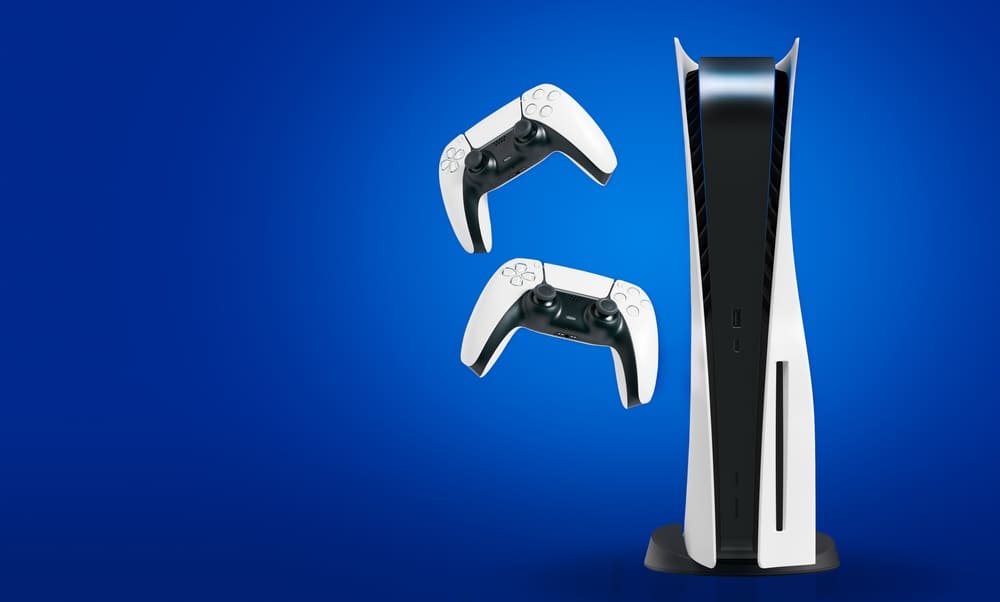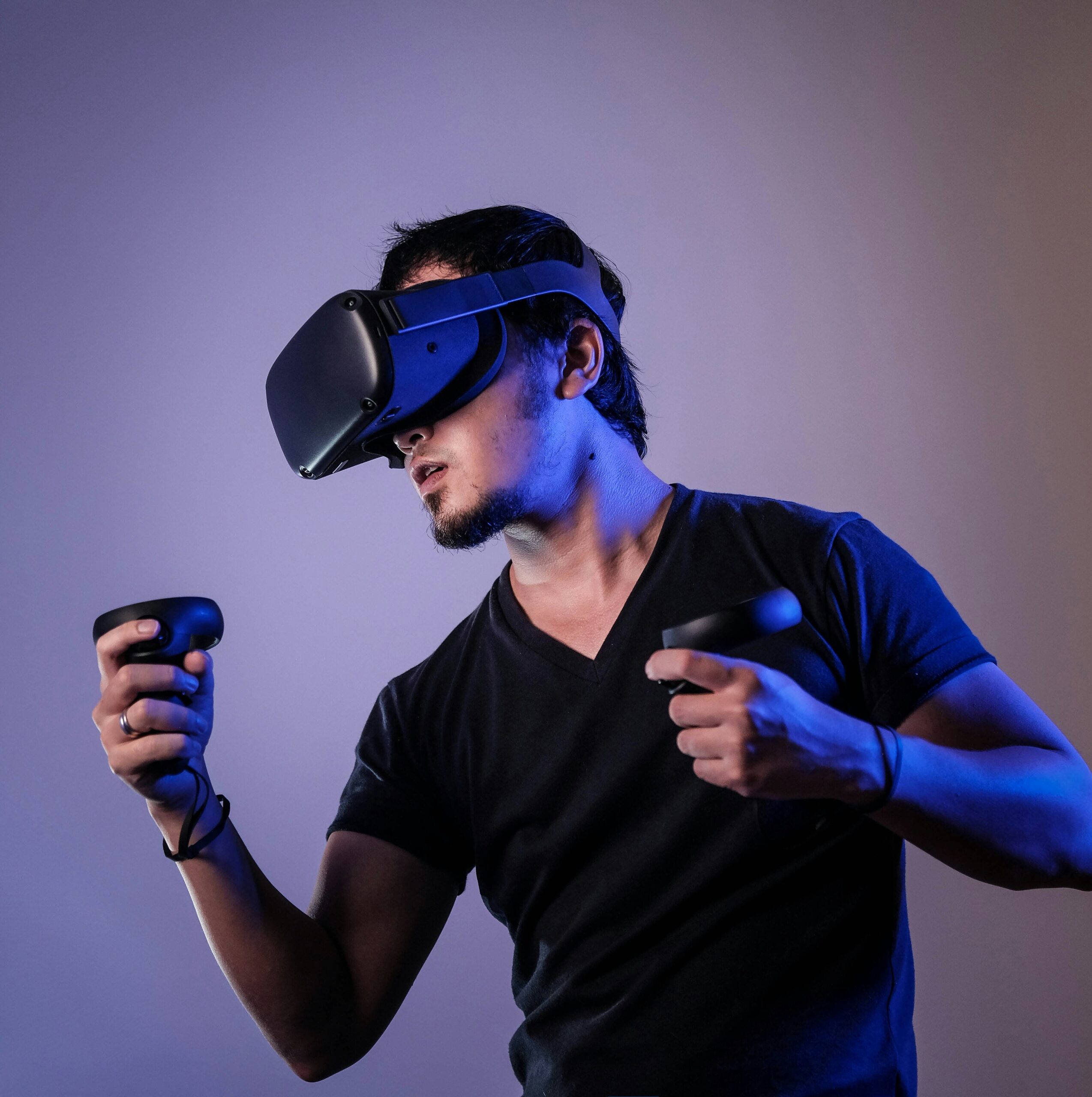Introduction to PlayStation 5
The PlayStation 5, Sony’s latest entry in its esteemed line of gaming consoles, was officially released on November 12, 2020, marking a significant evolution in the gaming landscape. Upon its release, the PlayStation 5 garnered widespread acclaim for its advanced hardware capabilities, innovative features, and transformative gaming experiences. As the successor to the highly successful PlayStation 4, the PS5 continues to build on Sony’s legacy of delivering cutting-edge entertainment technology.
The PS5 stands out with its bold design and powerful performance. It is equipped with a custom AMD Zen 2 processor and a high-speed SSD, allowing for significantly reduced load times and seamless gameplay. Additionally, the console’s GPU supports ray tracing, a technology that enhances visual realism by simulating the way light interacts with objects in a virtual environment. This combination of hardware advancements positions the PlayStation 5 as a formidable competitor in the next-generation console market.
From a historical perspective, the PlayStation 5 is the fifth major home console in Sony’s PlayStation series, which began with the original PlayStation in 1994. Each successive model has introduced new innovations and set higher standards in the gaming industry. The PlayStation 5 continues this trend, offering players an unparalleled level of immersion and interactivity. Its release has not only captivated long-time PlayStation fans but has also drawn the attention of new audiences eager to experience the latest advancements in gaming technology.
As we delve deeper into the distinct features, technical specifications, and the overall gaming experience offered by the PlayStation 5, it becomes evident that this console is more than just an upgrade; it represents a significant leap forward in the evolution of gaming. This exploration will provide insights into how the PS5 is reshaping the future of interactive entertainment and why it is considered a milestone in the world of video games.

Cutting-Edge Features of the PS5
The PlayStation 5, or PS5, introduces a suite of cutting-edge features that significantly enhance the gaming experience, setting it apart from its predecessors and competitors. One of the most revolutionary additions is the new DualSense controller. This innovative device incorporates haptic feedback and adaptive triggers, which provide a more immersive and tactile gaming experience. Haptic feedback enables players to feel a broader range of sensations through the controller, from the grittiness of driving over gravel to the gentle patter of raindrops. Adaptive triggers add another layer of realism by offering varying levels of resistance depending on in-game actions, such as drawing a bowstring or accelerating a vehicle.
Another groundbreaking feature of the PS5 is the Tempest 3D AudioTech, which aims to provide a more immersive sound experience. This technology allows for highly accurate spatial audio, making it possible to hear where sounds are coming from with pinpoint accuracy. Whether it’s the rustle of leaves behind you or the footsteps of an approaching enemy, Tempest 3D AudioTech enhances the depth and realism of the game world, making it easier for players to become fully engrossed in their virtual environments.
The PS5 also boasts an ultra-high-speed SSD, which dramatically reduces load times and allows for more seamless gameplay. This solid-state drive’s speed not only shortens waiting periods but also enables developers to create more expansive and detailed game worlds without the constraints of traditional storage bottlenecks. As a result, players can enjoy richer, more complex environments and smoother transitions between game scenes.
In terms of design, the PS5 stands out with its sleek, futuristic look. The console’s aesthetic is characterized by a bold, curvaceous form and a striking black-and-white color scheme. This design is not just about appearance; it also facilitates better cooling and efficient performance. The PS5’s physical design complements its powerful internal components, ensuring that it operates efficiently while maintaining a visually appealing presence in any gaming setup. Read About Gaming Market Trends
These features collectively make the PlayStation 5 a formidable contender in the gaming console market, offering an unprecedented level of immersion, speed, and aesthetic appeal.
Technical Specifications
The PlayStation 5 boasts a range of impressive technical specifications that set it apart from its predecessor, the PS4 Pro. At the heart of the PS5 lies a custom AMD Ryzen Zen 2 CPU, which features eight cores and 16 threads running at a variable frequency up to 3.5 GHz. This powerful processor significantly enhances the console’s ability to handle complex tasks and deliver smoother gameplay experiences.
Complementing the CPU is the RDNA 2 GPU, also developed by AMD. This graphics processing unit offers 36 compute units running at a variable frequency up to 2.23 GHz, delivering a raw performance of 10.28 teraflops. Such power enables the PlayStation 5 to support ray tracing, a technology that produces more realistic lighting, shadows, and reflections in games, thereby elevating the overall visual experience.
Memory is another crucial aspect where the PlayStation 5 shines. It is equipped with 16GB of GDDR6 memory, which provides ample bandwidth for handling high-resolution textures and complex scenes with ease. This high-speed memory ensures that the system can keep up with the demands of modern gaming, reducing latency and enhancing responsiveness.
One of the standout features of the PS5 is its custom 825GB SSD, which dramatically improves loading times compared to the traditional hard drives found in older consoles. The SSD’s innovative design allows data to be read at speeds up to 5.5GB per second, virtually eliminating load times and enabling seamless transitions between game environments. This speed advantage is a significant leap from the PS4 Pro’s HDD, where load times often broke the gaming immersion.
When comparing these specifications with the PS4 Pro, the advancements are clear. The PS4 Pro’s AMD Jaguar-based CPU and its 4.2 teraflop GPU are outclassed by the PS5’s superior hardware, resulting in better performance, richer graphics, and faster load times. These technical improvements collectively contribute to a more immersive and enjoyable gaming experience on the PlayStation 5.
Exclusive Games for the PS5
The PlayStation 5 has garnered significant attention, not just for its cutting-edge hardware but also for its exclusive game offerings. At launch, the PS5 featured a range of titles that showcased its capabilities, setting a high bar for gaming experiences. Among these, Demon’s Souls stands out as a remarkable remake of the classic action RPG. Utilizing the PS5’s enhanced graphics and faster loading times, Demon’s Souls delivers a visually stunning and seamless gameplay experience. The game’s atmospheric environments, detailed character models, and improved frame rates are testaments to the power of the PlayStation 5.
Another standout title is Ratchet & Clank: Rift Apart. This game takes full advantage of the PS5’s SSD and the DualSense controller to provide an immersive experience. Players can traverse different dimensions almost instantaneously, thanks to the console’s rapid loading capabilities. The haptic feedback and adaptive triggers of the DualSense controller further enhance the gameplay by providing tactile sensations that correspond with in-game actions. This level of interactivity and immersion is a significant leap from previous generations.
One cannot discuss PS5 exclusives without mentioning Spider-Man: Miles Morales. This game builds on the success of its predecessor, Spider-Man (2018), and introduces new mechanics that leverage the PS5’s hardware. The ray-tracing technology provides realistic reflections and lighting, making the game’s recreation of New York City breathtakingly lifelike. Additionally, the game benefits from nearly nonexistent load times, allowing players to swing through the city without interruption.
Looking ahead, several upcoming titles are generating buzz within the gaming community. Horizon Forbidden West and God of War: Ragnarök are highly anticipated and are expected to push the boundaries of what the PlayStation 5 can achieve. These games promise to build on the robust foundation laid by the launch titles, offering even more advanced graphics, deeper storytelling, and intricate gameplay mechanics. As the library of exclusive games continues to grow, the PS5 is set to provide increasingly unique and enhanced gaming experiences.
Backward Compatibility
The PlayStation 5 offers a robust backward compatibility feature, making it an enticing prospect for long-time PlayStation users. This next-generation console supports a vast majority of PlayStation 4 games, ensuring that gamers can continue to enjoy their existing library without the need for additional hardware. The backward compatibility on the PlayStation 5 is not merely a token gesture; it comes with enhancements that elevate the gaming experience.
One of the most significant improvements is the reduced load times. Thanks to the PlayStation 5’s ultra-high-speed SSD, many PS4 games load substantially faster, minimizing wait times and maximizing playtime. Furthermore, the console’s powerful hardware allows for higher and more stable frame rates in numerous titles. This means smoother and more immersive gameplay, which can make a noticeable difference, especially in action-packed or visually demanding games.
Despite its strengths, the backward compatibility of the PlayStation 5 does have some limitations. While the console supports the majority of PS4 titles, there are a few exceptions. Certain games may not be compatible due to licensing issues, technical constraints, or other reasons. Sony has provided a list of these incompatible games, which is relatively short, but it is important for users to check whether their favorite titles are affected.
Additionally, some games may not benefit from the enhanced performance features. While many titles experience improved load times and frame rates, there are instances where the improvements are minimal or non-existent. Nonetheless, the overall backward compatibility of the PlayStation 5 adds significant value for long-time PlayStation users, offering a seamless transition to the new console while allowing them to enjoy a richer, more responsive gaming experience.
Performance and User Experience
The PlayStation 5 has garnered significant attention for its impressive performance in real-world usage. Central to this performance is the console’s user interface, which has been designed to be both intuitive and responsive. The speed of navigation is notably swift, allowing users to switch between games and applications with minimal lag. This efficiency is largely attributed to the PS5’s custom SSD, which drastically reduces load times and enhances overall system responsiveness.
One of the standout software features of the PlayStation 5 is the “Game Help” function. This feature provides players with in-game tips and walkthroughs without the need to exit the game, streamlining the gaming experience. Additionally, the Control Center offers quick access to important settings and notifications, all without disrupting gameplay. These enhancements are aimed at delivering a seamless and immersive experience for the user.
Feedback from early adopters and reviewers has been overwhelmingly positive. Many have praised the PS5’s ability to maintain high frame rates and 4K resolution, even during demanding gameplay sessions. This performance is supported by the console’s powerful GPU and CPU, which work in tandem to deliver stunning visuals and smooth gameplay. Reviewers have also highlighted the Dual Sense controller, noting its advanced haptic feedback and adaptive triggers as significant improvements over previous iterations.
However, there have been some criticisms as well. A few users have reported issues with the limited storage capacity of the base model, which can be a concern given the large file sizes of modern games. Additionally, the console’s large physical size has been a point of contention for those with limited space. Despite these drawbacks, the overall consensus is that the PlayStation 5 offers a robust and engaging user experience.
In conclusion, the PlayStation 5’s performance and user experience elements significantly contribute to its appeal. The combination of a fast, intuitive interface, innovative software features, and powerful hardware makes it a standout choice for gamers seeking a next-generation console experience.
Comparison with Previous PlayStation Models
The PlayStation 5 signifies a substantial leap forward from its predecessors, the PlayStation 4 and PlayStation 4 Pro, in various aspects. One of the most notable improvements lies in the hardware enhancements. The PlayStation 5 is powered by a custom AMD Ryzen Zen 2 CPU and a RDNA 2-based GPU, enabling it to deliver unprecedented performance and graphical fidelity. This marks a significant upgrade from the PS4’s Jaguar CPU and GCN architecture GPU, which, while impressive at their time of release, are now considerably outpaced by the PS5’s advanced components.
In terms of design, the PlayStation 5 showcases a futuristic and bold aesthetic, with a more pronounced and striking physical presence compared to the more understated appearances of the PS4 and PS4 Pro. The PS5’s design doesn’t just serve an aesthetic purpose; it also incorporates functional improvements. The system’s cooling solutions have been enhanced to ensure quieter operation and better heat management, which addresses one of the common complaints about the PS4 and PS4 Pro’s noisier fans.
User experience has also seen remarkable advancements with the PlayStation 5. The introduction of the new DualSense controller, with its haptic feedback and adaptive triggers, provides a more immersive and tactile gaming experience. This is a significant step up from the DualShock 4, which, while innovative in its own right, does not offer the same level of interactivity and engagement. Additionally, the PS5’s ultra-fast SSD drastically reduces load times, allowing for a smoother and more seamless gameplay experience. This is a stark contrast to the PS4’s and PS4 Pro’s mechanical hard drives, which often resulted in longer load times and less fluid gaming sessions.
These improvements culminate in a gaming experience that is not only more visually stunning but also more immersive and enjoyable. The evolution from the PS4 to the PlayStation 5 highlights Sony’s commitment to pushing the boundaries of what is possible in home gaming consoles. With the PlayStation 5, users can expect a significant enhancement in gameplay and overall satisfaction, making it a worthy successor to the PS4 and PS4 Pro.

PS5 vs Competitors
When evaluating the PlayStation 5 against its current-generation competitors, particularly the Xbox Series X and Series S, several key differences in hardware, exclusive games, subscription services, and overall gaming experience emerge. The PS5 and Xbox Series X are the flagship models of their respective brands, while the Xbox Series S offers a more budget-friendly alternative.
In terms of hardware, the PlayStation 5 boasts a custom AMD Ryzen Zen 2 processor and a GPU capable of 10.28 teraflops, providing robust performance and stunning visuals. The Xbox Series X, on the other hand, features a similar custom AMD processor but with a GPU delivering 12 teraflops, giving it a slight edge in raw power. The Xbox Series S, while less powerful, is designed for 1440p gaming and offers a more accessible price point, making it an attractive option for casual gamers.
Exclusive games are a significant factor when choosing between these consoles. The PS5 shines with a strong lineup of exclusives, including titles like “Demon’s Souls,” “Ratchet & Clank: Rift Apart,” and “Returnal.” These games leverage the PS5’s unique features, such as the DualSense controller’s haptic feedback and adaptive triggers, to deliver immersive experiences. Conversely, Xbox Series X and Series S focus on backward compatibility and the extensive Xbox Game Pass library, which includes hits like “Halo Infinite” and “Forza Horizon 5.” While Xbox exclusives may not be as numerous, the Game Pass service offers tremendous value and variety.
Subscription services also differentiate these consoles. PlayStation Plus and PlayStation Now provide access to online multiplayer and a rotating selection of games, respectively. Xbox Game Pass, however, stands out for its extensive catalog of games available on day one of their release and its integration with Xbox Live Gold through Game Pass Ultimate. This service model has garnered praise for offering substantial value to gamers.
Overall gaming experience varies based on individual preferences. The PlayStation 5 excels in delivering immersive, exclusive experiences and cutting-edge technology, while the Xbox Series X and Series S offer powerful hardware options and exceptional value through their subscription services. Potential buyers should consider their gaming priorities, whether it’s exclusive titles, performance, or value, to make an informed decision between these current-generation consoles.
